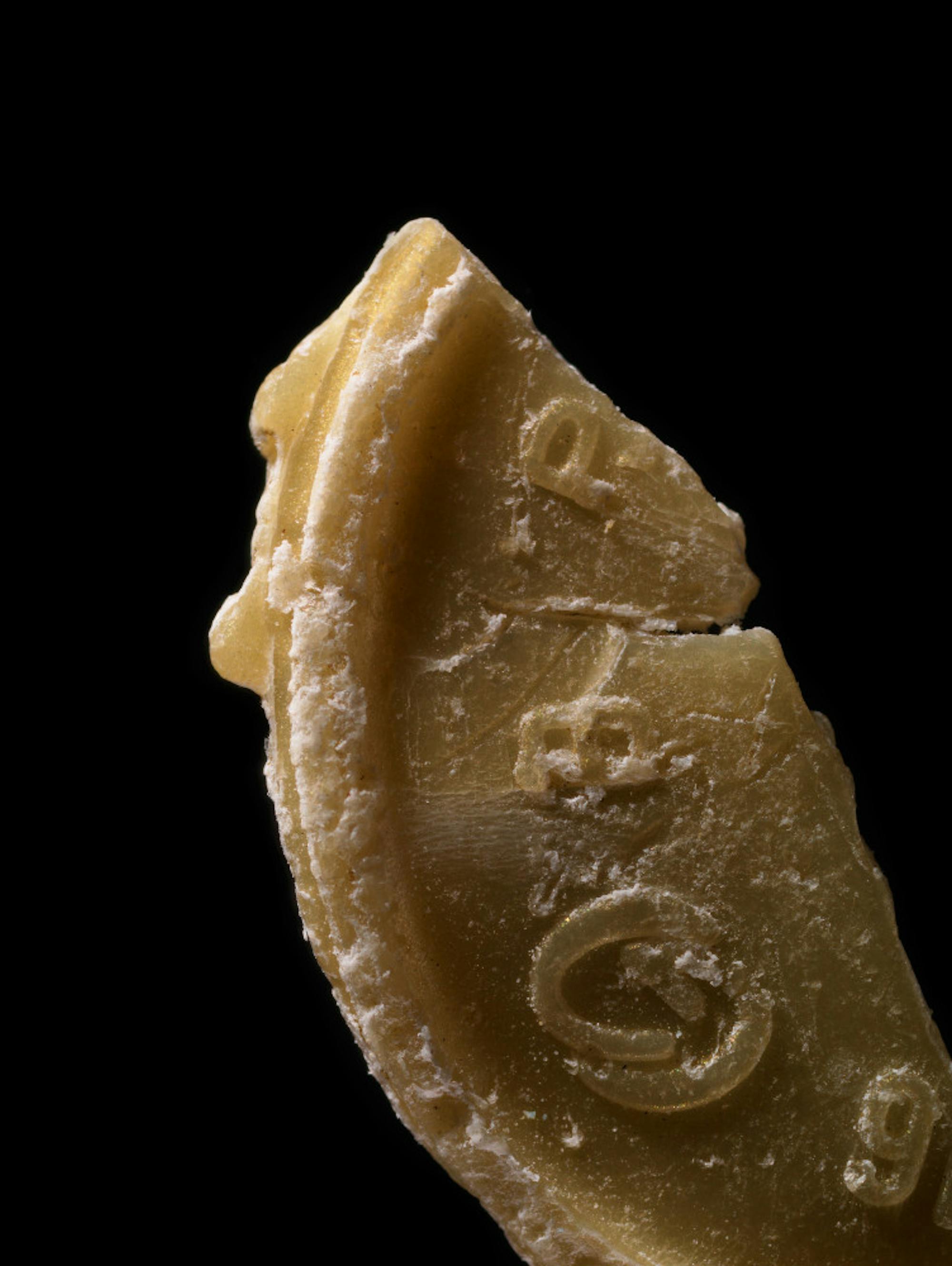The first pieces that can be seen through the entrance of the Tisch Family Gallery at the Tufts University Art Gallery are photographs of gemlike objects against black backgrounds. The colors are so vivid, and the textures are so detailed that they almost jump off of the wall.
At first glance, this installation appears to be a celebration of beautiful minerals, fossils and gemstones, composed of a mixture of found objects and photographs. Upon reading the description of Evelyn Rydz’s "Floating Artifacts," one discovers that this is only partially true. According to the sign on the wall next to the installation, the photographs depict tiny bits of ocean debris that have washed ashore. "Floating Artifacts" examines the life cycle of this debris, “from ancient organisms, to fossil fuel at the base of the ocean, to quickly manufactured plastic toys and tools on land and back to the ocean as floating fragments of our contemporary lives,” reads the installation's online description.
Perhaps the most fascinating aspect of this installation is how it illustrates humankind's complicated relationship to the ocean, an incredibly vast and largely unexplored area of the world that we inhabit. The installation calls on us to consider the negative environmental impacts that humans have on ocean life. For example, pollution of plastics has created the Great Pacific Garbage Patch, a large area in the Pacific Ocean with an alarmingly high concentration of small plastic particles that are diffused throughout the water column. Because of their overwhelming abundance and small size, it is nearly impossible to clean these microplastics out of the ocean.
The interactive nature of the installation forces visitors to think about our connection to the countless tiny pieces of plastic in the ocean. On a table in the middle of the gallery sit two microscopes, a small filing drawer and several small, covered samples of ocean debris. Visitors are able to view the covered samples through the microscopes, investigate their physical characteristics and speculate on their origins. They are then encouraged to write these observations down on notecards and organize them into the filing cabinet so that other visitors can read them. One visitor guessed that a coral-colored object with white growths had broken off of a child’s toy from Hawaii.
Another sample on display, a photograph denoted as "F.A. 33," shows a powder blue image that is covered with tiny ridges. Beneath the microscope, "F.A. 33" resembles an aerial view of a glacier, which brings to mind the significance of the microscopic details of a vast landscape.
Through the photographs she includes in the installation, Rydz (LA ’05) encourages visitors of the gallery to think about the end destination of discarded plastic objects. For example, a candy wrapper tossed away in a garbage can could make its way into the ocean and find itself in the digestive tract of an aquatic animal. “Floating Artifacts” was specially commissioned as a local component of an iteration of “The Ocean After Nature,” a series of connected shows that explore similar themes.
The current presidential administration has demonstrated disdain for environmental protection by removing sections of the Environmental Protection Agency's website as they relate to climate change, among other controversial actions and statements. In light of this hostility toward environmental protection, Rydz’s art becomes even more powerful and relevant.
Though her photographs of tiny pieces of colorful plastics are captivating and gorgeous, they are also a frightening reminder of damage we have done to the earth. By blowing up these microscopic objects into large images, Rydz draws attention to the fact that even the tiniest actions can have huge consequences.
'Floating Artifacts' at Tufts Art Gallery provokes reflection on pollution






